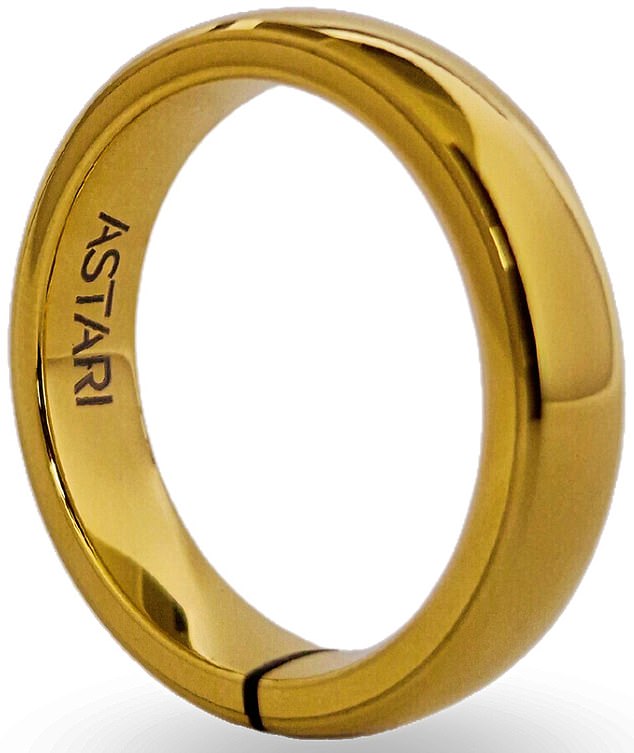I remember, when I was six, my dad having a minor tantrum at a service station. There was a petrol shortage and he complained about paying through the nose. The cashier also refused some of his money – they no longer accepted the threepenny bit.
‘But it’s money!’ he cried. I recall finding this complaint and the phrase ‘paying through the nose’ extremely funny.
Then, ten years ago, karma came for me. My mum was ill and I rushed to London to visit her in hospital. I took a train to East Croydon then attempted to board a bus, which is where my own payment nightmare began.
‘We don’t accept cash,’ the driver informed me through his anti-rage Perspex bubble when I dropped two £1 coins into his tray – I’d rushed out of the house without my wallet, and I’m afraid I was something of a latecomer to smartphone payments. As the driver invited me to disembark, my cry rang down the ages: ‘It’s still money!’
I vowed that day I would immediately avail myself of every modern payment tool. A wise decision, since cash is now rejected on many airlines, ditto at Pizza Hut, Gail’s bakeries and Itsu. And Asda has begun phasing it out at its petrol station forecourts. But now I’m ahead of the game – I’ve bought an Atlantis contactless payment ring made by a Dutch company called Astari, specialists in ‘wearables’.
Smart rings aren’t new. Fitness tracker ones – the Samsung Galaxy, the Oura Ring – are very popular, while a ring from Chinese firm Colmi will allow you to make phone calls via your finger (once the device is connected to a smartphone via Bluetooth). For payments, there are bracelets and keyrings – and their popularity is growing. The first ever payment ring was launched in 2016 but it was the pandemic that boosted the need for fast, hygienic transactions. The market, worth $56 million in 2024, is expected to triple in the next five years. The promise is as simple as it sounds: you pay for things with the ring on your finger.

Is this the end of debit cards?
I chose my ring size, sent Astari £78 (paid for with Paypal, not threepenny bits) and my plain black ceramic band duly arrived.
The setup was a bit confusing because the list of banks with which I could connect was very limited. I’ve never heard of Monovate or Guavapay. It turns out most people simply download a ‘wallet partner’ called Curve and add their preferred payment card to it. Another app called Manage-Mii is then used to manage the ring – freeze payments if you lose it, for example. But after that it is simple: there’s no account to top up, it debits your nominated bank card automatically.
Even better, you don’t have to charge the ring, as it works via a passive NFC (near field communication) chip. Each time you present it to a contactless payment machine, that machine itself provides the charge for the encrypted transaction to take place. You don’t even need your smartphone with you – a real plus for people like me who are always popping out with theirs low on battery. Or without it.
I have to say, heading out for a swim at my local lido (the ring is fully waterproof) on the first sunny day of summer, emerging from the pool in trunks (no phone, no wallet) to buy a round of coffees from a little cabin effortlessly with my hand did make me feel I’d gone one up on 007. Bond would have to schlep back to get his wallet or phone from his Aston Martin in the car park, wouldn’t he?
Later that day I presented my fist to the payment terminal at a Tesco superstore like a medieval king proffering his hand to be kissed. Admittedly, the security staff looked a bit suspicious seeing me interact with their contactless pad in such a haughty and grandiose manner – but when the automated voice said ‘Your payment is accepted’, I felt I’d been beamed down from the future.
I got a good reaction on my local train, too, where you can buy a ticket later while travelling. I fist-bumped the conductor’s machine to the delight of some schoolkids – you hold the ring against it for a few seconds longer than a debit card, so it’s best to do it in slow motion, like a friendly punch to the arm of someone you haven’t seen for ages.
‘How did you do that?’ asked one of the kids.
‘I’m just very special,’ I replied. I know, immature. But it’s not every day you feel like a superhero. What shall I call myself? Cash Man?
In my fruit and veg shop, where elderly people still dole out coins and notes quaintly from purses, you’re asked: ‘Cash or card?’ I very much enjoyed saying ‘Neither, thank you. Ring.’
The reaction has been largely amazement – even if my newsagent did scowl and check his machine to make sure I wasn’t doing something dodgy. I have news for him: pricier payment rings can be used to open doors, send digital business cards and unlock your smartphone. In Scandinavia people even have payment and door-opening microchips embedded in their hands.
Personally, I would like a ring I can wear through my septum, like those people in clown trousers you see playing the bongos at Glastonbury. That way I really could pay through the nose.












